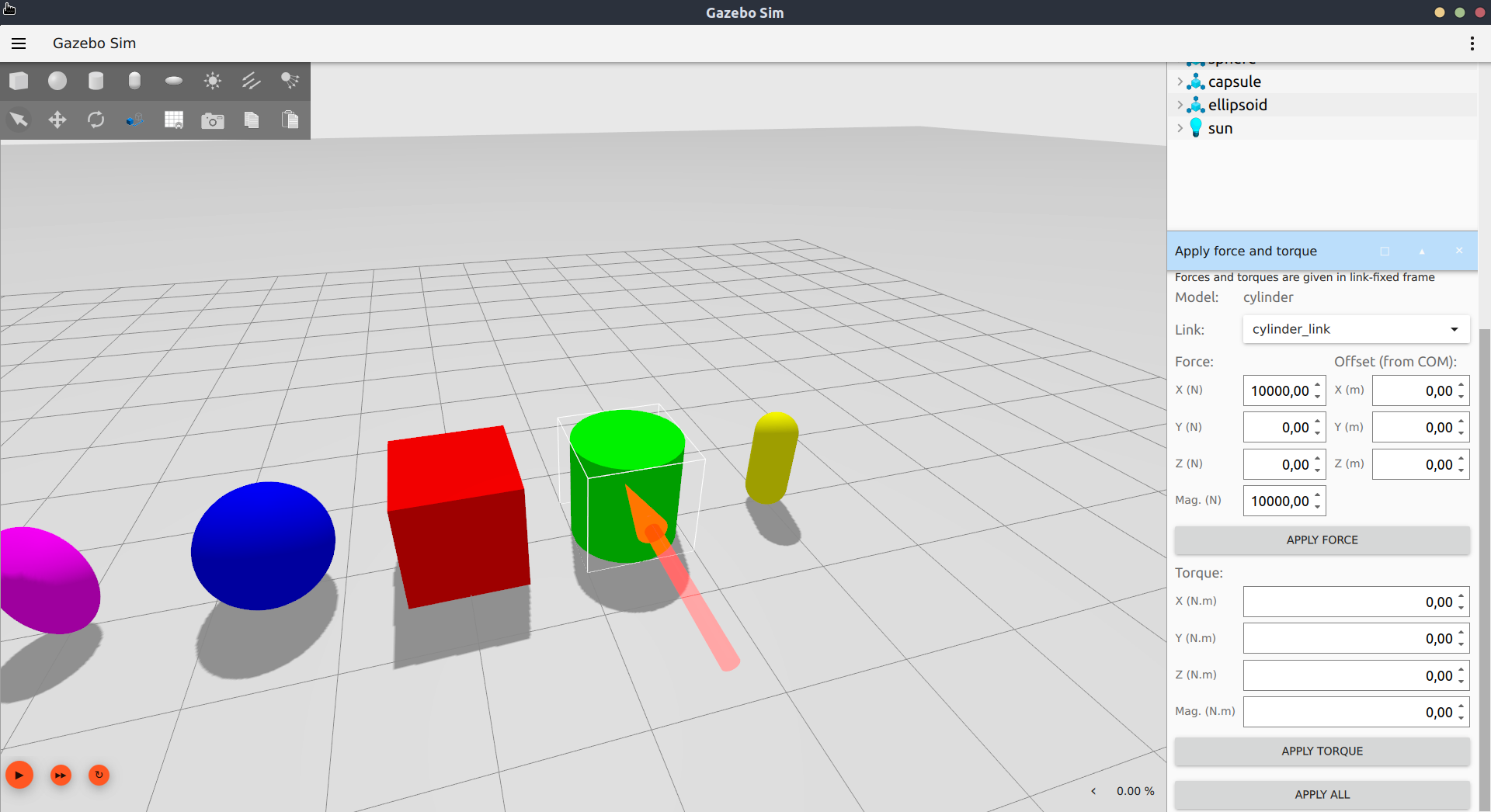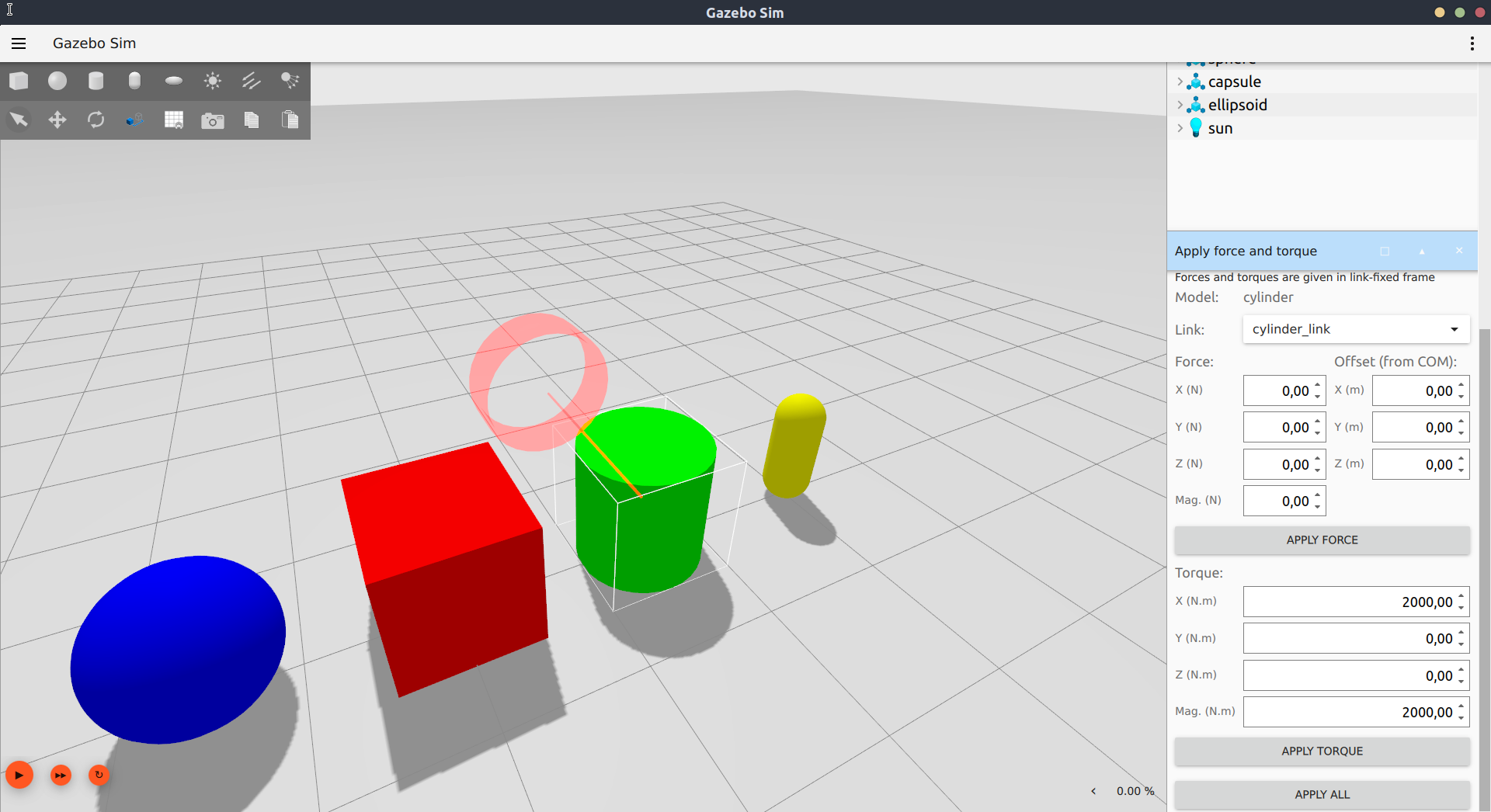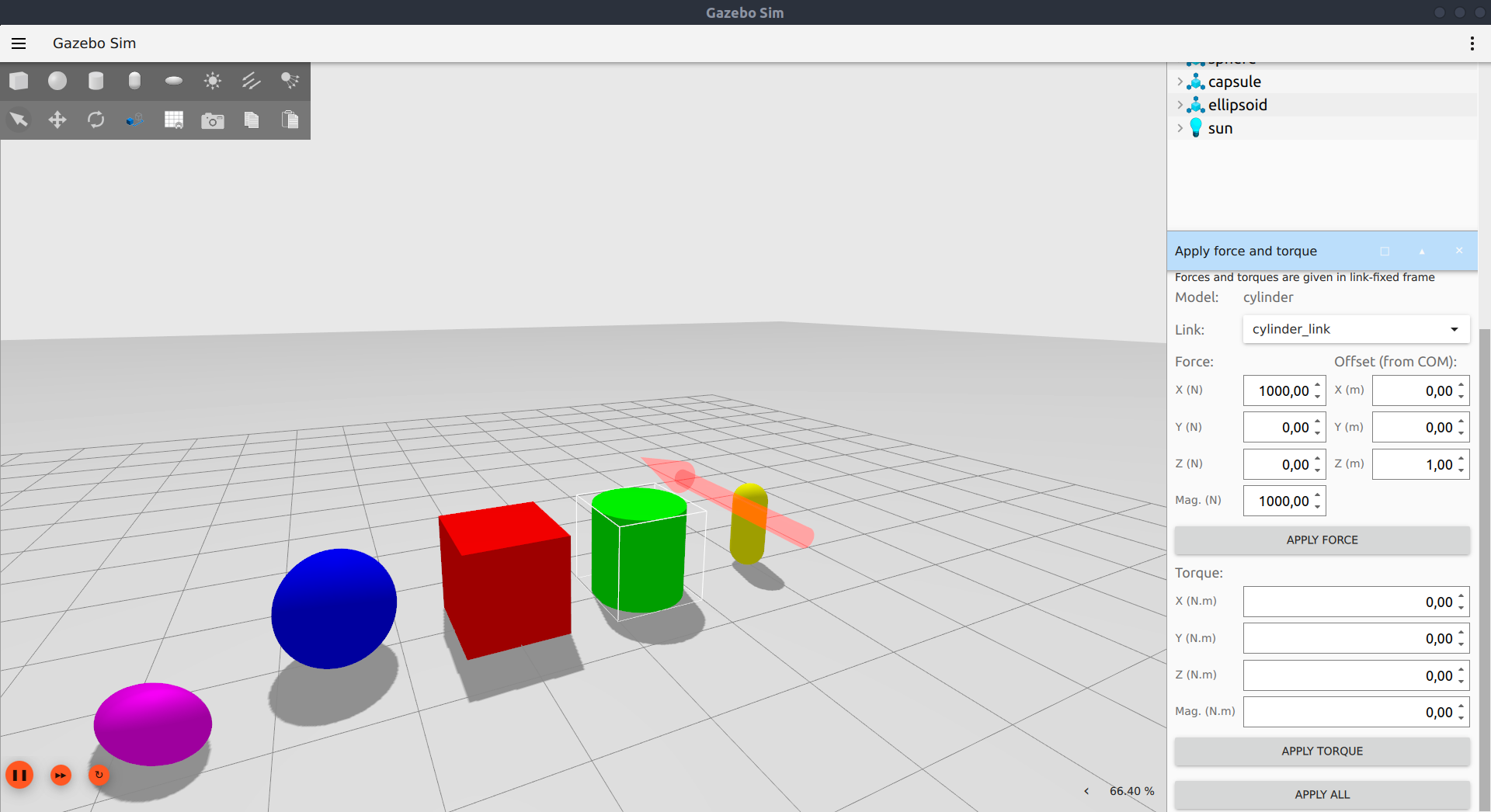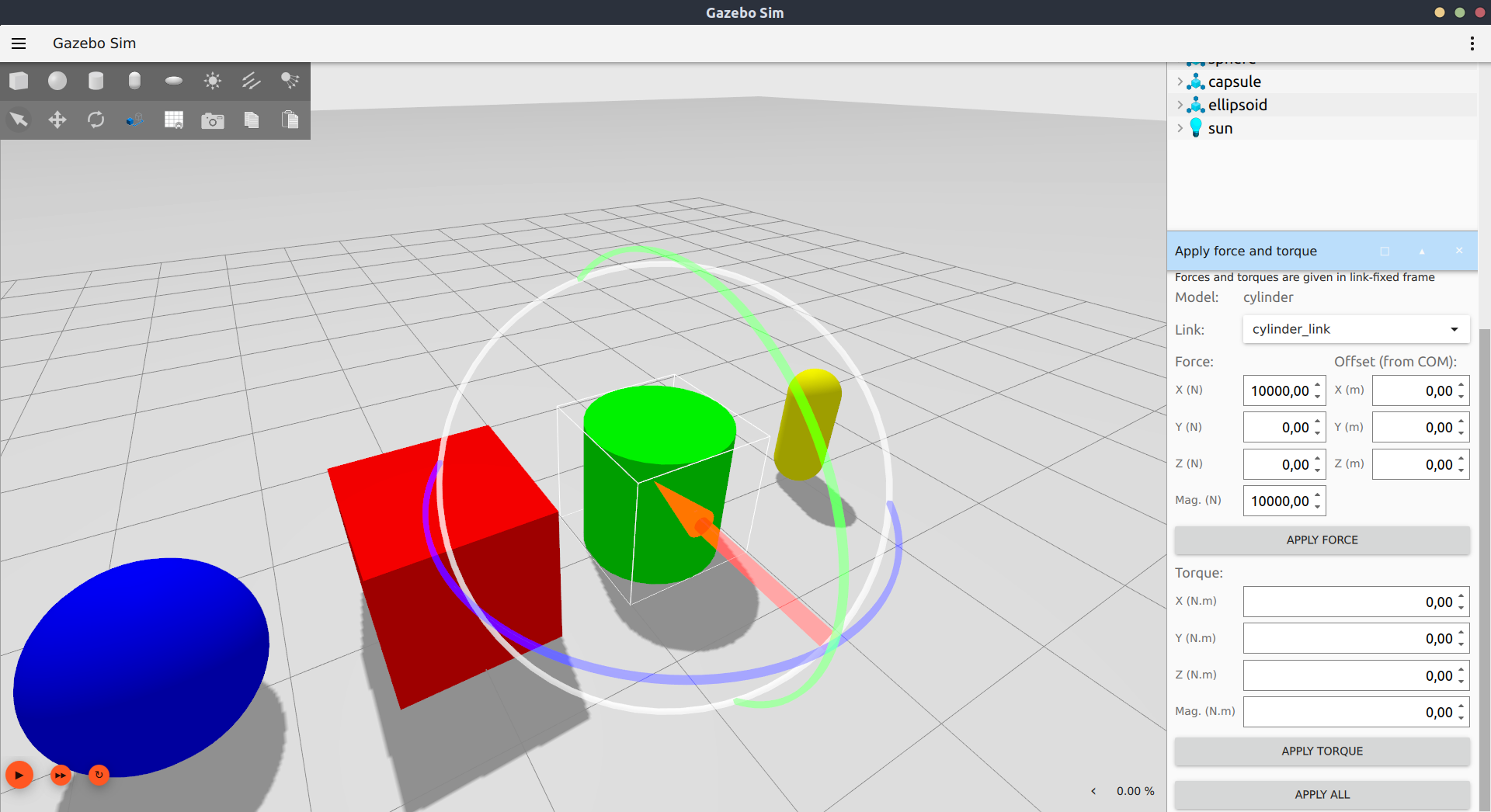The Apply Force Torque plugin allows users to apply forces and/or torques to links in the simulation through the graphical user interface.
Examples
Let's go through an example of applying force and torque to simple models. Open the shapes.sdf world with
From the plugin dropdown, select the Apply Force Torque plugin. Make sure the simulation isn't paused.

Apply force to a link
We want to apply force to the cylinder model. Select the model, either by clicking on it in the scene or through the Entity Tree. If the model had multiple links, we could select through the interface which one to apply the force to (in this case, cylinder_link).
On the dialog, write 10000 on the X field under Force and click on Apply Force. The cylinder will be pushed on the X direction. The force was applied in the link's X direction for a single time-step, which is in the order of milliseconds, thus the need for such a large force.

Apply torque to a link
On the dialog, write 2000 on the X field under Torque and click on Apply Torque to see the cylinder rotate slightly.

Apply force with an offset
By default, the force is applied to the link's center of mass, but this can be modified through the Offset fields. On the dialog, write 1000 on the X field under Force and 1 under the Z field under Offset. Press Apply Force to see the model move slightly in the X direction while also rotating around the Y direction.

Rotation tool
On the dialog, write 10000 on the X field under Force. Click on the force vector to make the rotation tool appear. Drag the blue circle to rotate the force around the Z axis so that it is aligned with the Y direction. Notice how the XYZ fields changed, but not the magnitude. Press Apply Force to see the model move in the Y direction.

The interface explained
Note: If you apply force and/or torque while the simulation is paused,
they will accumulate and be applied all at once when the simulation is unpaused.
Force
- Force X, Y, Z: Each field specifies how much force will be applied on that direction, in Newtons (N). The frame is fixed to the link.
- Mag: The total magnitude of the force which will be applied, which is the Euclidean norm of the 3 forces above. Changing the magnitude changes the XYZ fields proportionally, maintaining the force direction.
- Offset X, Y, Z: By default, force is applied to the link's center of mass, in meters. Here you can edit the X, Y and Z fields to give the force an offset with respect to the center of mass expressed in the link's frame.
- Tip: Right-click the model and choose
View->Center of Massto see its position. You will want to also make the model transparent to see the center of mass visual (View->Transparent).
- Tip: Right-click the model and choose
- Apply Force: Click this to apply only force for one time step. Keep in mind that time steps are typically in the order of milliseconds, so relatively large forces are needed in order to apply a significant impulse.
Torque
- X, Y, Z: Each field specifies how much torque will be applied about that axis, in Newton-meters (N.m). The frame is fixed to the link.
- Mag: The total magnitude of the torque which will be applied, which is the Euclidean norm of the 3 torques above. Changing the magnitude changes the XYZ fields proportionally, maintaining the torque direction.
- Apply Torque: Click this to apply only torque for one time step. Keep in mind that time steps are typically in the order of milliseconds, so relatively large torques are needed in order to apply a significant angular impulse.
- Note: Torque is always applied about the center of mass.
Apply All
Force and torque are applied at the same time, i.e. apply a wrench.
Rotation Tool
The vector (force or torque) directions will always match the directions specified in the dialog. From the dialog, the direction can be changed by editing the numbers on the XYZ fields.
From the scene, select a vector to enable the rotation tool, then drag the handles. This changes the direction of the vector, updating the XYZ fields accordingly without modifying its magnitude. You may click again on the vector to unselect the rotation tool.